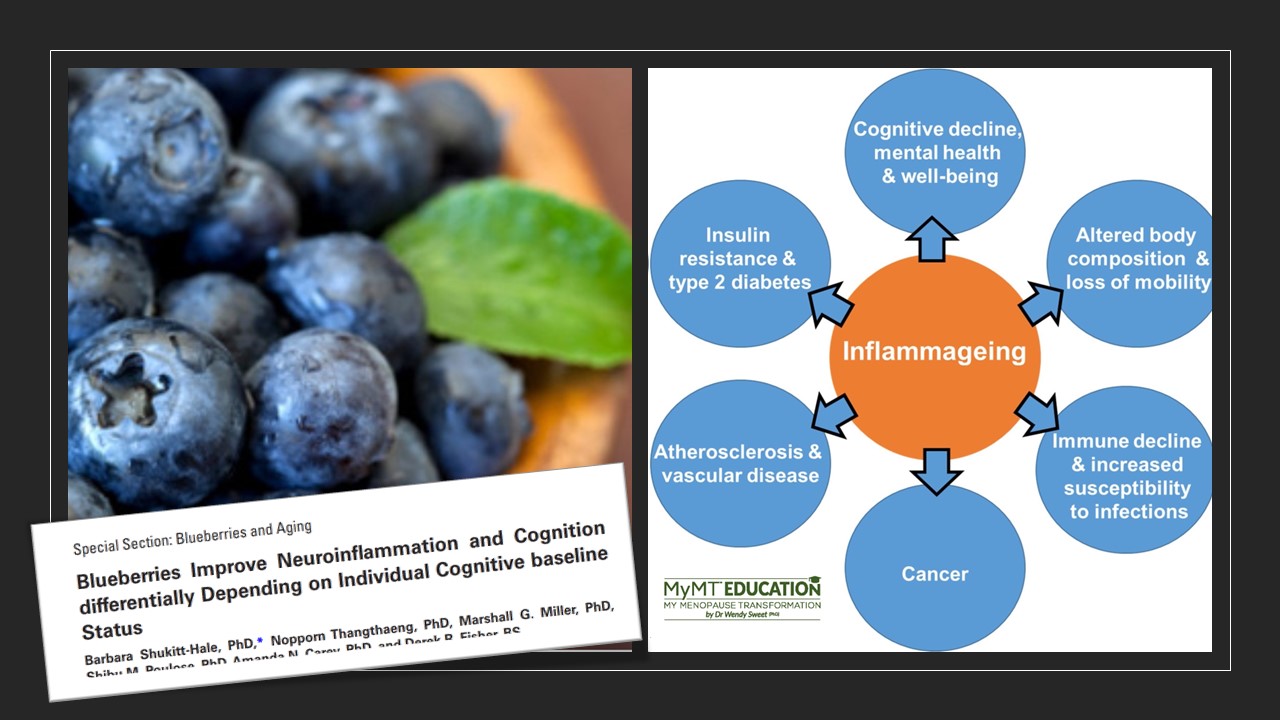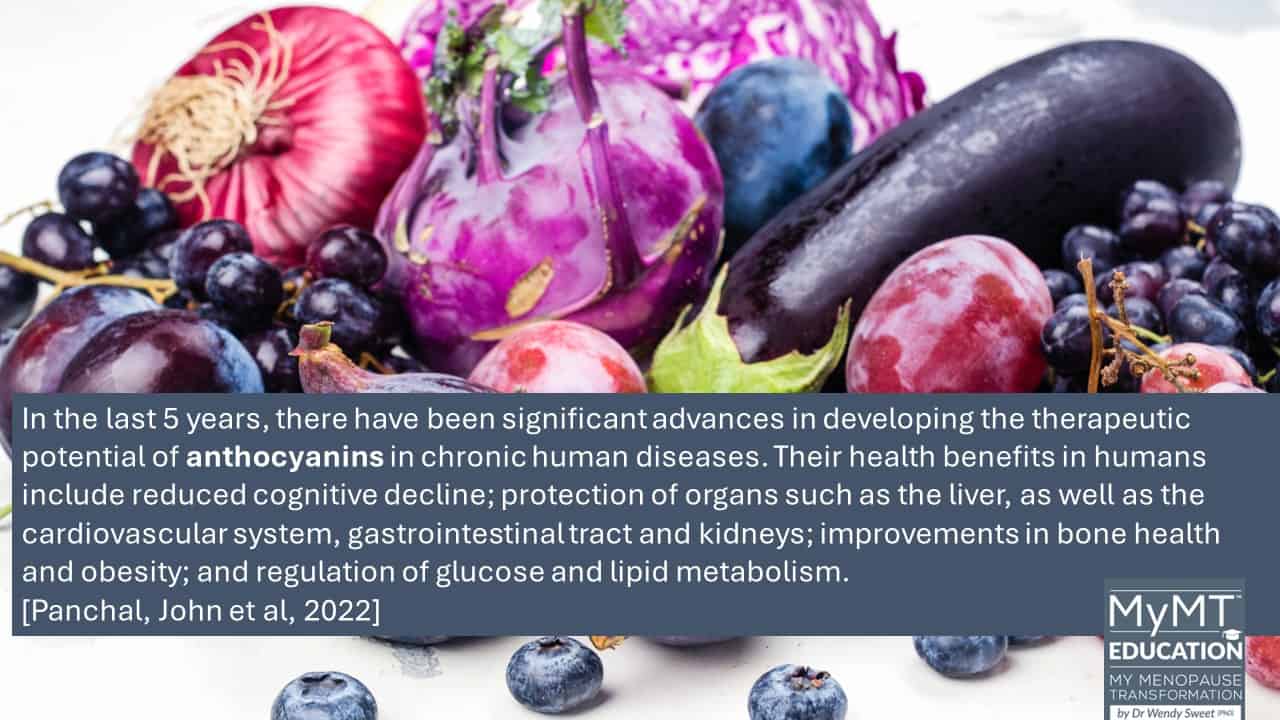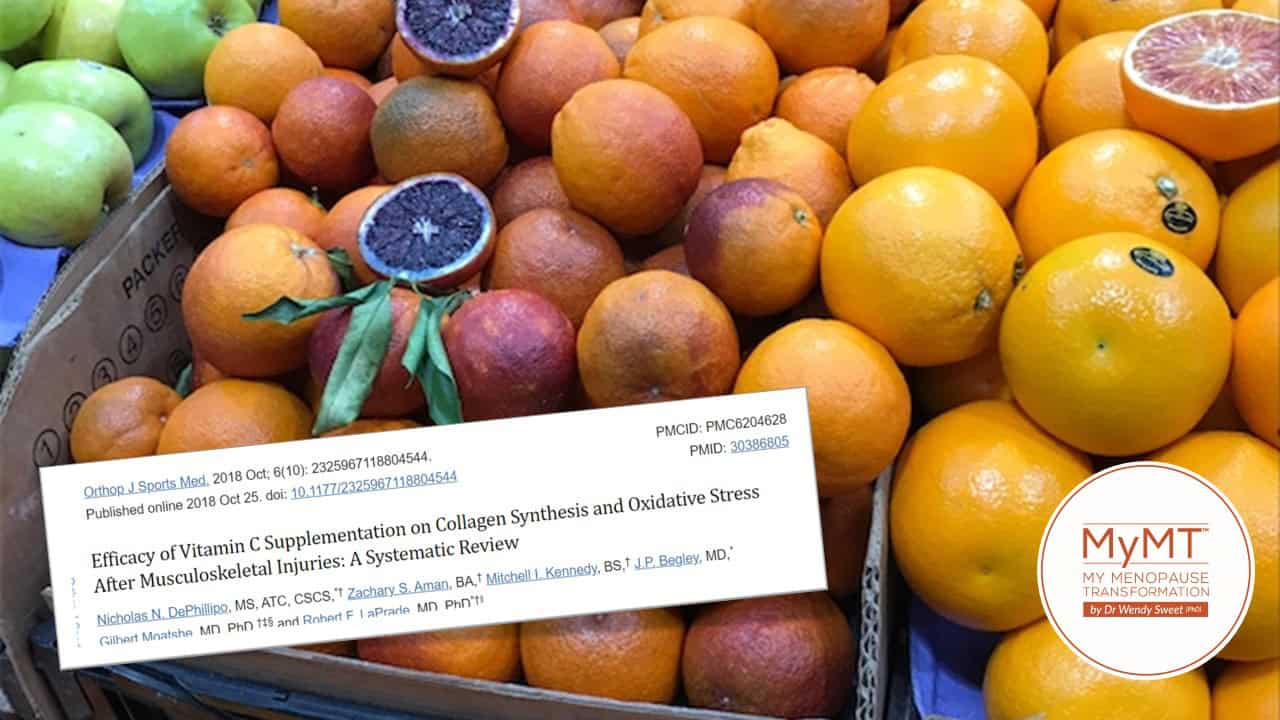Over the past few decades, the relationship between nutrition and ageing has been extensively studied in both animals and humans.
It was rats that led researchers down the path to the incredible influence that berries, particularly blueberries, have on reducing the inflammation that can build up in our brain and nerves as women move through mid-life and head into their ageing years beyond.
The decline in oestrogen production during menopause has many and varied effects around the female body. Some of these changes to oestrogen levels influence the presence of inflammation in the brain and along the nerves, including in the optic nerves and inside blood vessels.
The nerve endings are particularly vulnerable to changing oestrogen status as women move through menopause. When a nerve signal passes down the nerve, it ‘jumps’ to other nerves via the nerve endings (dendrites). In menopause, some of this signalling may slow down, causing memory problems and a ‘foggy brain’.
This elevated inflammation that is thought to contribute to the decline in cognitive and motor function as we age. (Shukitt-Hale et al, 2019).
There are also inflammatory changes to the blood vessels as women move through menopause and I’ve written about the effect of vascular stiffness in other articles. This vascular or arterial stiffness cause the blood vessels to lose some elasticity, which can also contribute to higher blood pressure and migraines in women during menopause too.
The good news for women, is that Health and Ageing Scientists have discovered that compounds commonly found in blueberries can help fight this inflammation proving that food really can be medicine.

Blueberries and other purple berries, such as blackcurrents contain anthocyanins, which are known to have anti-inflammatory properties. Compounds from these powerful fruits are also in menopause nutraceuticals.
Nutraceuticals are nutritional elements with medicinal characteristics, hence the name ‘Nutra’ stands for food and ‘ceutical’ means therapeutic properties.
Food and food products listed as Nutraceuticals must meet the standards for having medicinal value and for providing health benefits as well as for their use in preventing or treating age-related diseases.
As I positioned menopause in the ageing research, it made sense to explore foods that were evidenced to help us reduce inflammation as we age.

Certain foods, such as blueberries, produce opposing effects against the degenerative and inflammatory processes in the body as we move into and through menopause. Many of these foods are evidenced to have beneficial effects on our immune and digestive systems, hence improving not only how we feel, but our quality of life.
What makes blueberries so special in helping to reduce inflammation and in protecting eye health, is a compound called ellagic acid.
This is believed to help prevent cellular changes and whilst all berries contain some ellagic acid, strawberries and blueberries have the most.
Ellagic acid is a powerful antioxidant. These compounds assist in reducing damage caused by free radicals. The term ‘free radicals’ refers to harmful oxygen molecules that damage our heathy cells, so in effect, certain compounds in foods, such as ellagic acid, help to detoxify cells, reducing damage in them.
The excessive production of free radicals has detrimental effects on our DNA, collagen, elastin and blood vessels – all of these structures are affected by changing oestrogen levels in menopause. It’s important to protect them from further damage. But ellagic acid isn’t the only compound that is beneficial to our cells from blueberries – Vitamin C is important too and berries contain large amounts of Vitamin C.

Plants are prime producers of secondary substances that are known to help reduce inflammation as we age. These secondary substances, known as polyphenols, are abundant in fruits and vegetables.
Numerous studies have been conducted on various polyphenols exploring which ones help to fight diseases attributed to ageing. Resveratrol is one of these compounds and is found in the skin of peanuts and grapes.
Polyphenols in blueberries are another. Dietary intake of polyphenols, particularly anthocyanins found in blueberries, are being increasingly recognised as beneficial for modern human eye health (Huang, Yan et al, 2018).
The high antioxidant potential of blueberries has been associated with improvement in memory, reduction of neuro-degenerative damage in the brain and in the improvement of eye health as individuals age.
Blueberries and other purple foods are included in the dietary advice I have for women who join me on the MyMT™ programmes and as a Health Practitioner, you can advise women to include these in their daily diet too.
Wendy Sweet (PhD)/ Member: Australian Society of Lifestyle Medicine/ MyMT™ Founder & Coach

References:
Aiyer, H. S., Vadhanam, M. V., Stoyanova, R., Caprio, G. D., Clapper, M. L., & Gupta, R. C. (2008). Dietary berries and ellagic acid prevent oxidative DNA damage and modulate expression of DNA repair genes. International journal of molecular sciences, 9(3), 327–341. https://doi.org/10.3390/ijms9030327
Bajwa, S. K., Singh, S., & Bajwa, S. J. (2012). Ocular tissue responses to sex hormones. Indian journal of endocrinology and metabolism, 16(3), 488–489. https://doi.org/10.4103/2230-8210.95762
Huang, W., Yan, Z., Li, D., Ma, Y., Zhou, J., & Sui, Z. (2018). Antioxidant and Anti-Inflammatory Effects of Blueberry Anthocyanins on High Glucose-Induced Human Retinal Capillary Endothelial Cells. Oxidative medicine and cellular longevity, 2018, 1862462. https://doi.org/10.1155/2018/1862462

